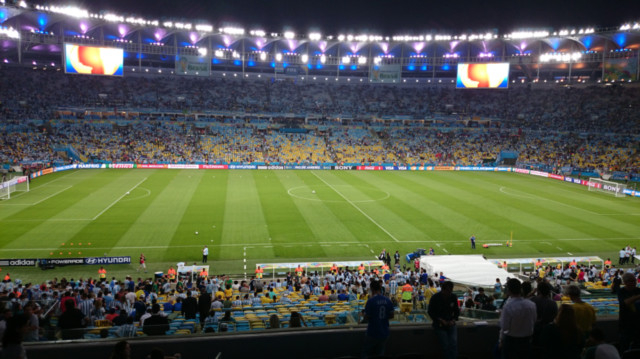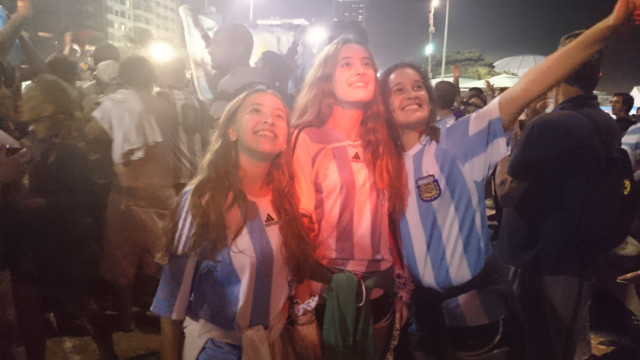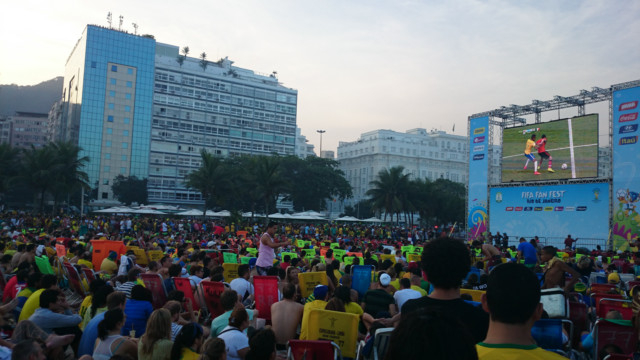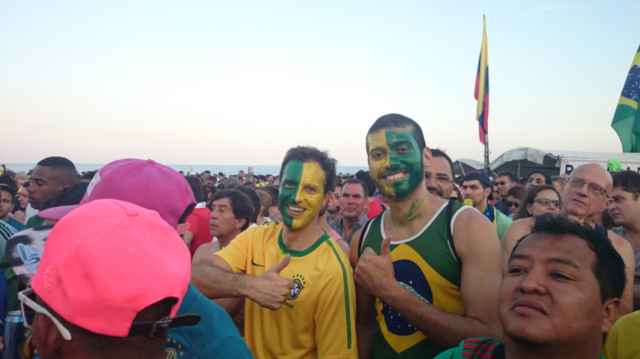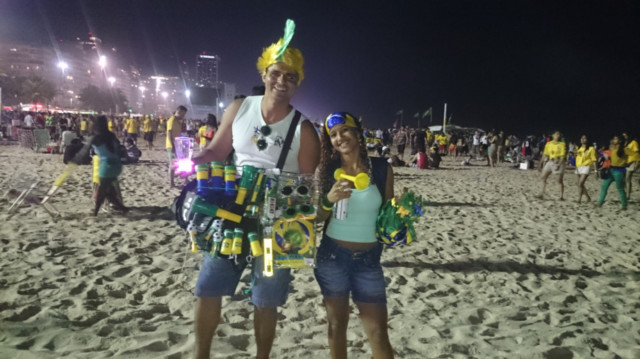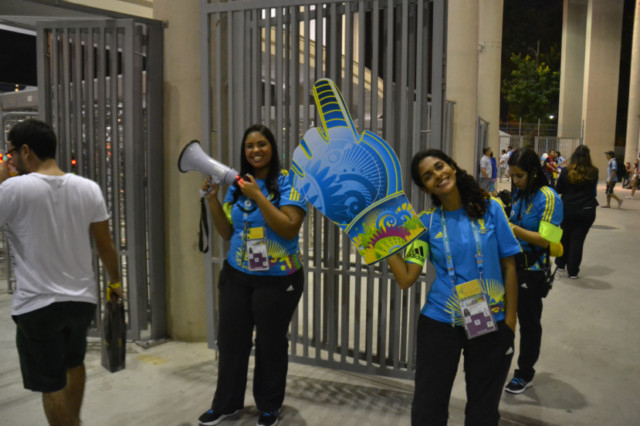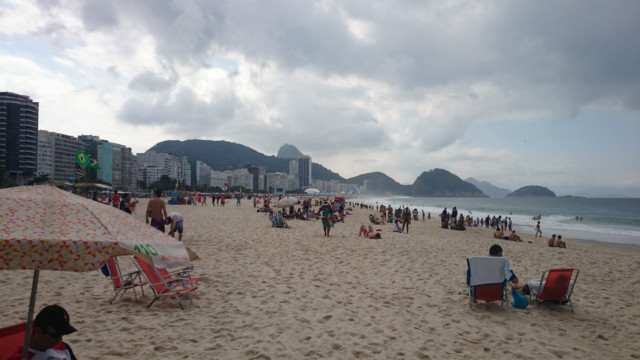
From Que bonito é (How beautiful it is) to Eu Sou Brasileiro (I am a Brazilian) ... the infectious chants from fans celebrating Brazil’s entry into the second round of the World Cup on the Copacabana beach grew louder with every passing minute.
We could not resist joining in the fun — and before we knew it, we were singing and dancing with the Brazilians.
Rio can do that to you.
May be it has got something to do with the air, may be it’s the magnificent beaches in the city, or the food they consume, or their gorgeous women and men, or may be a combination of all of these.
No matter how much you may have read, heard and seen of this Latino paradise on television and in fancy travel magazines, being there, especially during the World Cup, would surely rank as the greatest experience any intrepid traveller can ever have.
And, though their team has crashed out of the Copa de Copa, the atmosphere in Brazil since the last month has been nothing short of amazing.
I was very lucky. No, make that blessed, to be there during the early part of the World Cup.
When you are surrounded by thousands of lovely people singing, chanting, dancing and generally having a jolly time, there must be something right with the world, right?
Actually, the party had begun much earlier — the minute we boarded our 14-hour flight from Dubai on June 14. The person on my right was dressed in a Brazilian football jersey but he wasn’t a Brazilian. He was an Iranian who was a big fan of the Brazilian team.
Football can do this to you.
It can bring together people of all races, creed or colour — all bound by one common passion played out in a green field. “Play football, not war”, could be as effective a mantra as “make love, not war”.
In Rio, our hotel was located in the middle of the world’s most famous beaches — Copacabana and Ipanema. And let me tell you, despite all I had heard about them, what I saw and experienced there simply blew me away.
Azure waters lapping against the sun-kissed beaches with distant hills standing proud against the advancing seas make this place one of the most sought-after destinations on the global map.
The hundreds of toned and bronzed bodies soaking in the sun or surfing the waves or playing futevolei (foot volleyball) along the 5-km stretch could easily give the Baywatch gang a run for its money.
And when the sun went to bed on the dark Antarctic ocean at eventide, the beach transformed into one massive party with the roadside tavernas, cafés and restaurants springing to life, helping sustain the energy of football fans and revellers with local food and beverages as they sang songs of their lands and danced under the stars late into the night.
Facing the South Atlantic coast, Rio de Janeiro (Portuguese for River of January) — the second-largest city in Brazil — is situated in the Guanabara Bay and got its name when the first European explorers, who arrived in January 1502 mistook it for the mouth of a river. The city was the capital of Brazil from 1763 until 1960, when the government was transferred to Brasília.
Aptly called cidade maravilhosa (marvellous city), Rio has one of the most stunning settings in the world and is one of the most visited cities in the southern hemisphere. Moulded around the foothills of the mountain range that provides its backdrop, with rocky islands and golden white sands touching the blue waters, there is also some architectural heritage, museums and galleries, restaurants and a vibrant nightlife for the visitors to explore in the city. The neighbourhoods near Copacabana such as Leme, Arpoador, Leblon, Lagoa, and Urca are definitely worth a walk or a bicycle ride.
The city is famous across the world for its carnival and samba and even if you happen to be there at other times, it is highly recommended to visit some of the clubs and Samba schools around Leblon, where you can catch samba shows.
There are half day and full day excursions organised by various travel agents that take you around the old town, the Sambódromo — a permanent grandstand-lined parade avenue used during Carnival, the historic Maracana stadium, Sugar Loaf mountain and of course Rio’s most iconic image — the statue of Christ the Redeemer atop the 710-metre high Corcovado Mountain (which means “hunchback”). The largest Art Deco statue in the world (38-metre high) — the Cristo Redentor — is among the new Seven Wonders of the World.
However, Sugar Loaf Mountain, which you can reach through two cable car rides, provides the more spectacular view of the city. We reached there by nightfall and were blown away by the sight of the lit-up city under our feet and the brightly lit Cristo Redentor looking down benevolently on us from the neighbouring mountain as the city went to sleep (does it ever?)
It was quite the perfect finale to our trip.
The next evening as our flight took off from Rio with the aircraft soaring over the majestic Corcovado mountains, I cast a wistful eye over the Copacabana beach as it was getting ready for another wild night of carnivalesque fun.
I was surely going to miss it all, After all, in just four days, Rio had left me with memories to last a lifetime.
I was already hoping to come back again. And with the Rio Olympics just a couple of years away, who knows, I could once again be down there singing Que bonito é with the Brazilians.


